
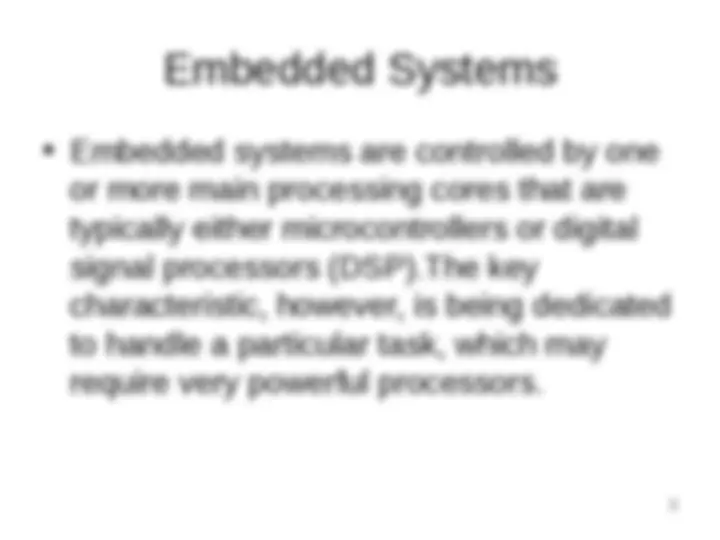
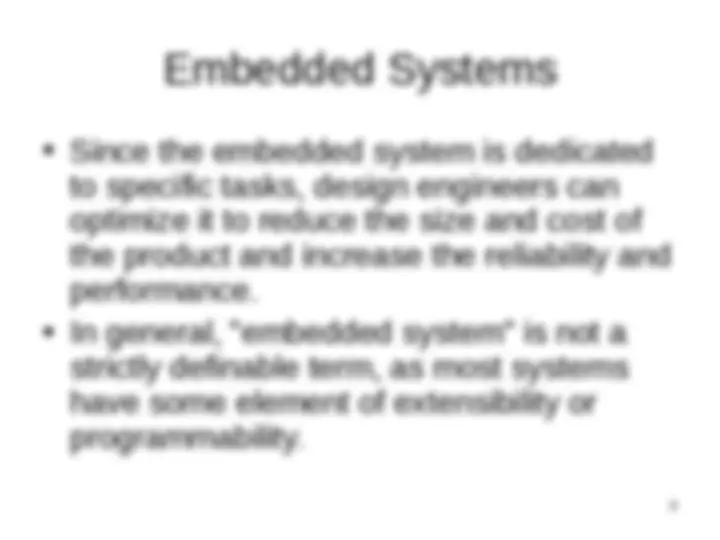
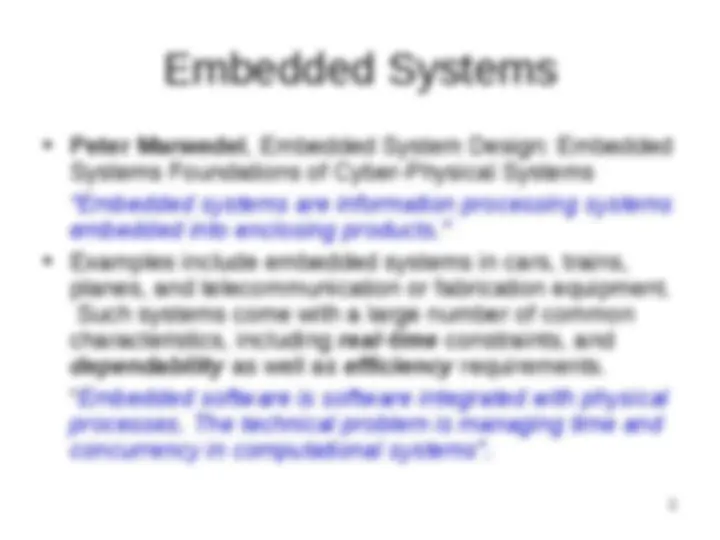
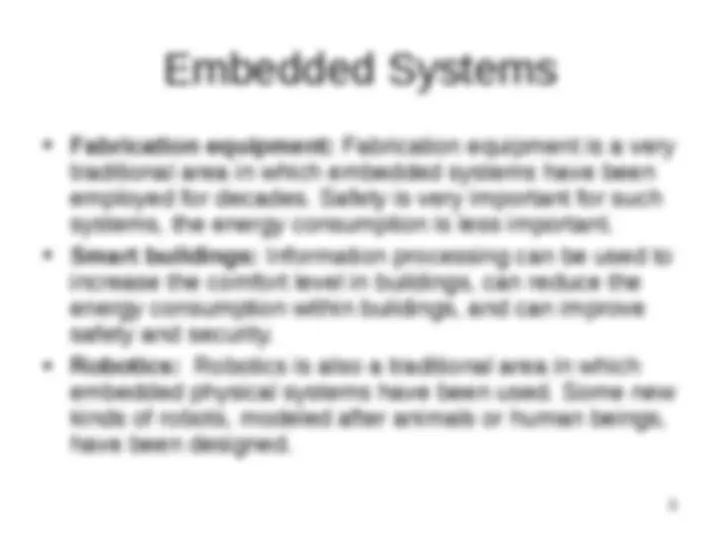
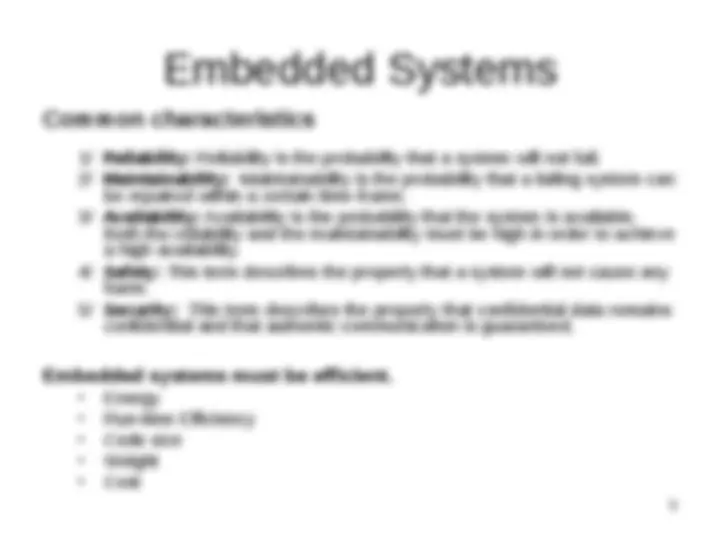


Study with the several resources on Docsity

Earn points by helping other students or get them with a premium plan


Prepare for your exams
Study with the several resources on Docsity

Earn points to download
Earn points by helping other students or get them with a premium plan
Community
Ask the community for help and clear up your study doubts
Discover the best universities in your country according to Docsity users
Free resources
Download our free guides on studying techniques, anxiety management strategies, and thesis advice from Docsity tutors
An introduction to embedded systems, explaining their definition, characteristics, and various application areas. Embedded systems are computer systems designed to perform specific tasks with real-time computing constraints, often found in devices such as cars, planes, and telecommunication equipment. They are controlled by one or more main processing cores, optimized for size, cost, and performance, and come with reliability, maintainability, availability, safety, and security requirements.
Typology: Essays (university)
1 / 9

This page cannot be seen from the preview
Don't miss anything!





